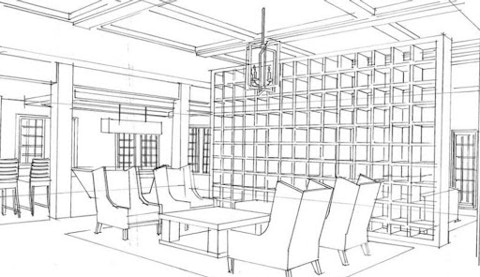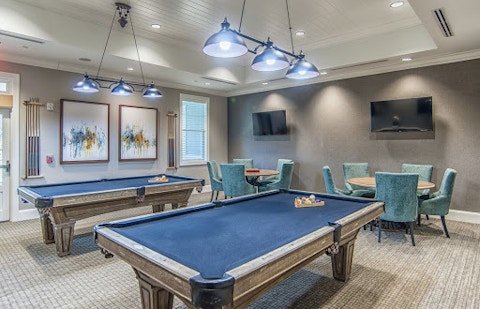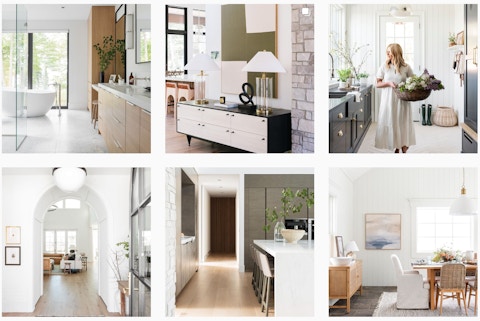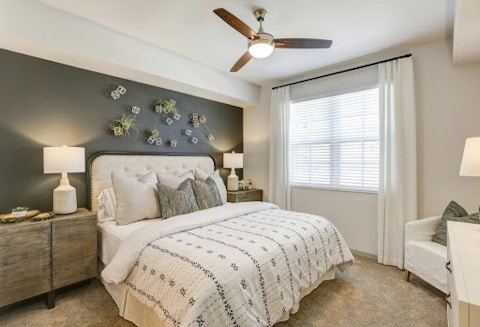More About This Episode
The Smarter Building Materials Marketing podcast helps industry professionals find better ways to grow leads, sales and outperform the competition. It’s designed to give insights on how to create a results-driven digital marketing strategy for companies of any size.
In this episode, we talked with Brooke Collins, the Regional Manager for the Florida division of Builders Design, about housing trends and product specifications in the building process, and how manufacturers can play a bigger role in the design decisions she makes.
Insights Into Interior Design
Brooke Collins works with Builders Design, a nationwide interior design firm that focuses on multifamily housing and model home merchandising. A big part of her role is to keep a pulse on trends in the housing industry. Booke has one foot in construction and the other in interior design and spends time researching all of it.
Builders Design works with builders and developers on the interior design of homes “from conception of a project to final completion,” explains Brooke.
The multifamily projects they handle can range in size and scope: “We'll do value-add properties that are old 70s-garden-style, where we go in and renovate it,” explains Brooke, “and then we also do luxury high rises in Miami.”
Brooke works on home design from start to finish, so she has an eye on every part of the design process in home building and multifamily design. She teams up with developers and architects to “create the project from that land development stage, all the way through schematic and programming, and into design development and then that final installation.”
Builders Design also partners with market research firms to better understand the trends that drive sales, everything from smart home technology to generational trends in the housing market. This gives Builders Design an acute understanding of what customers are after, so they deliver successful projects with the developers and builders on their team.

Today’s Trends: Multifamily and Home Design
Last year’s pandemic changed the game for everyone in the building industry.
“We were really lucky that construction continued,” says Brooke. “Although I think management companies did have some issues with people not being able to pay their rents and having to close amenities and things like that.”
But she points out a steady trend: “People are always going to need places to rent.”
“Overall construction in multifamily didn't really slow down,” says Brooke. “And I think the trends are even showing that, especially with millennials and Gen Zs, these younger cohorts aren't necessarily looking for commitment.”
Younger generations want the freedom to move around, so ”they're not necessarily looking to buy a home, but more so open to that idea of renting.”
Renting gives people a more flexible option, so “the multifamily market is expected to stay trending really high,” according to Brooke.
Peeking at the Process
Builders Design teams up with the developers and builders they work with early on, “ideally from when they're working on schematics design,” says Brooke. The goal is to deliver an end product that will stand out, so Brooke works closely with the team helping to “brand that project and determining what the vision is.”
That’s a hands-on process for Brooke. “We always tour the comps in the area to see what others have done, what has been successful, so we get that boots-on-the-ground research.”
There are a few popular features that Brooke and her team have noticed in their research:
- Older tenants (55+ years) want lifestyle and health amenities. “It's a lot about luxury fitness centers,” she says, where the amenities “become more like a health club and a spa-type deal.”
- For younger markets, they want more opportunities to gather and relax, and “love the pool and the entertainment aspect” of multifamily amenities.
- The fact that more people are working from home these days has also had an impact on design trends, so Builders Design includes features like “pods where you can work outside and even different kinds of technology and sanitation.”

The process of designing multifamily properties at Builders Design uses that research to start programming the spaces they’ll build. “We are laying out how spaces are going to work inside that building,” explains Brooke.
They’ll envision the design using a mood board to plan out the styles they see working in the space. From there, the design development process starts: “We're selecting all of the finishes — our flooring, our theme colors, our ceiling treatments, our lighting, all the design elements of the project,” Brooke says.
Then they move into construction design, where the team starts specifications, drawing out elevations, and working with contractors on pricing materials and products.
Before installation actually starts, though, is where the value engineering process begins, where contractors might recommend products from manufacturers they’ve worked with before, or something new that might add value to the project.
How Designers and Builders Are Finding New Products
The pandemic certainly changed how design firms like Builders Design find new products to use in their project. Usually, they’d go to trade shows and conferences to check out new products. But almost everything is virtual these days because of COVID restrictions and the convenience of technology.
Brooke says there are still ways to see products in person: “I think there's some companies that are doing trunk shows or trying to get people out into physical spaces to be able to see products.” Vendors have been innovative in how they’re getting new product information to their customers. And Brooke has found ways to see and experience new products in person.
“I always go and tour properties whenever I can, any kind of new developments or things that I've read about or heard about. Getting out there and just seeing the products and seeing what the tags are on things or asking certain questions like that,” she explains.
Social media has also helped designers find new products and materials to work with.
“Instagram definitely has those products, and even following different designers or different developers on Instagram, they tend to tag things a lot,” she explains. “I do have a couple accounts that I really like.”

She’s a fan of Studio McGee: “That is totally my style; that kind of natural and textural neutral, I love that look. So they're definitely one of my favorites.” She also follows Pure Salt Interiors, a design firm based out of California.
How Manufacturers Can Get Specified on a Project
For every design trend, there are dozens of products that could fit that style, so we asked Brooke what it takes for manufacturers to get selected for a project.
“With value engineering, it really does always come down to budget,” explains Brooke.
“So if a product has a really competitive price point, that's great,” she says. But it’s more than just cost that drives those budget decisions — the product has to add value for the designer.
There are a few things that designers will want to see from products.
Does it add comfort?
“So if it's flooring that has some kind of acoustical property to it that makes it being a little bit more expensive — totally worth it,” she explains. Acoustics are important in multifamily design, and having some underlayment can go a long way for buyers (especially if they’ve ever experienced loud upstairs neighbors).
Is it sustainable or green?
For younger markets, they want to know that the products in their homes are environmentally and socially-conscious: “If it's eco-friendly, if there's something that it's environmentally-friendly or giving back, a lot of companies will maybe donate money to helping the environment,” Brooke says. “I think that's going to be really important, especially with Gen Z coming up because that means so much to them.”
Is it easy to maintain?
“Millennials are very focused on maintenance,” explains Brooke. Homeowners and renters want materials that are low-maintenance, and they’re considering “what's going to be easy for them to maintain. And there are certain materials that are just super easy, so that's big.”
Is there a wow factor?
Manufacturers need to find a way to make their products stand out, at least visually, “because the multifamily market is saturated and there's a lot of product,” says Brooke. Developers will be more likely to buy into a product, even “something that might be a little bit more expensive, but if it's going to offer that really impressive, wow differentiator, then that's something we definitely look to do,” says Brooke.

Manufacturers can get in front of designers by devoting attention to their marketing and sales processes. Brooke notes that TileBar is one of her favorite brands — they know how to stand out. “I actually look at their emails because they're just so visually stimulating and the tiles are just continuously breaking the norm of what we typically see in tile,” she explains.
The value-engineering part of the process isn’t fun, in Brooke’s experience. “I mean, no one likes it. It's tough, and it's really time-consuming.” But manufacturers can make this part of the job a little easier for designers.
“If a manufacturer can work with us, if we do have to value-engineer, they're the ones that know the most about their product; ultimately, we're going for something that's functional and looks good,” says Brooke.
Want Even More Insight?
When manufacturers can solve problems for designers like Brooke and the team at Builders Design, it can go a long way. “Meeting the budget of the developer and of the contractor's budget, being able to work directly with the vendor to ultimately come up with a solution together would be ideal for us,” says Brooke.
Learn more about working with designers and builders like Builders Design successfully — listen to our interview with Brooke here.
You can talk more with Brooke and her insights on the multifamily market by emailing her at [email protected].
If you’re wondering how to elevate your building materials brand and get in front of the architect and design community, get in touch with us at [email protected].








